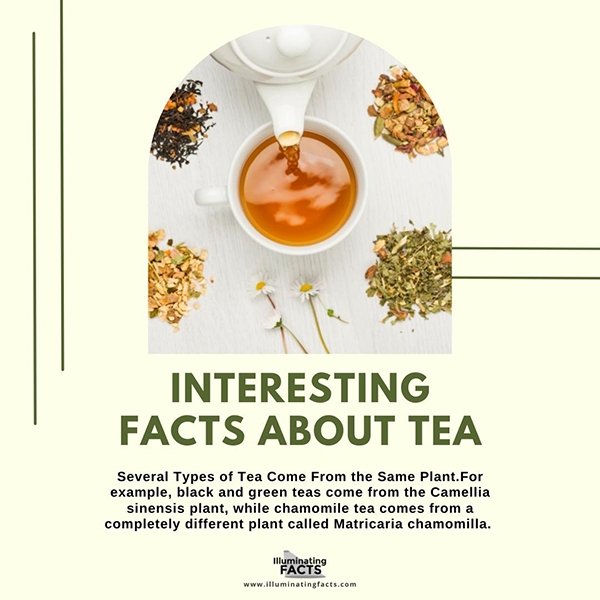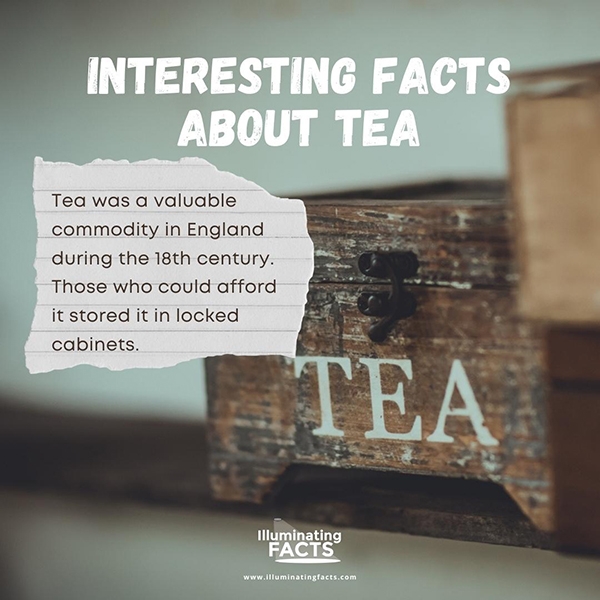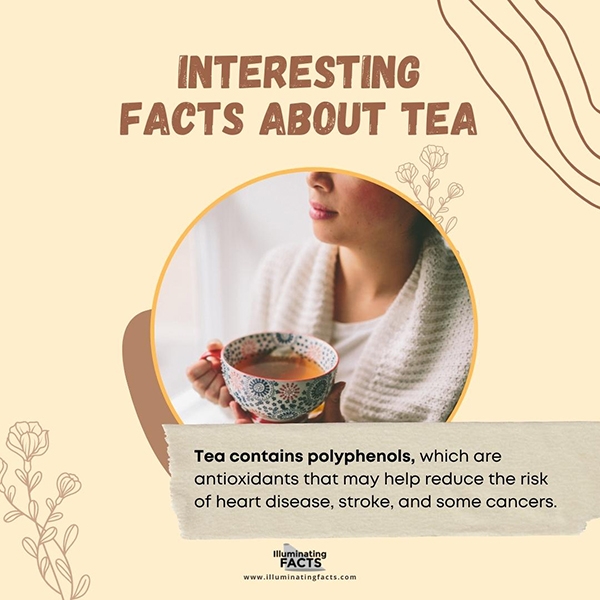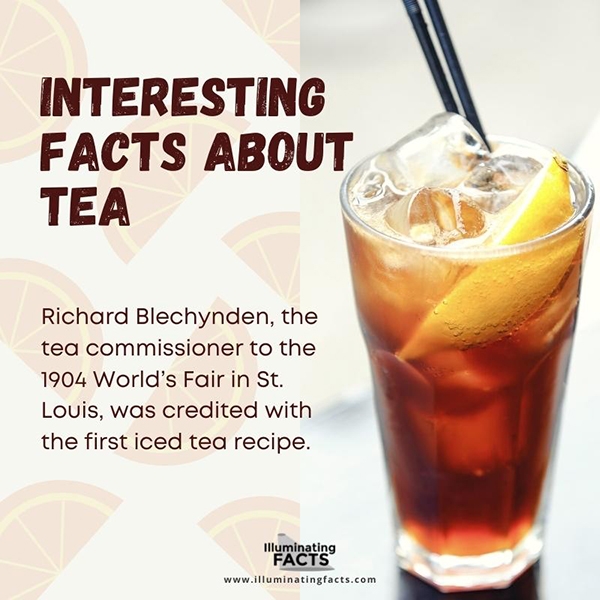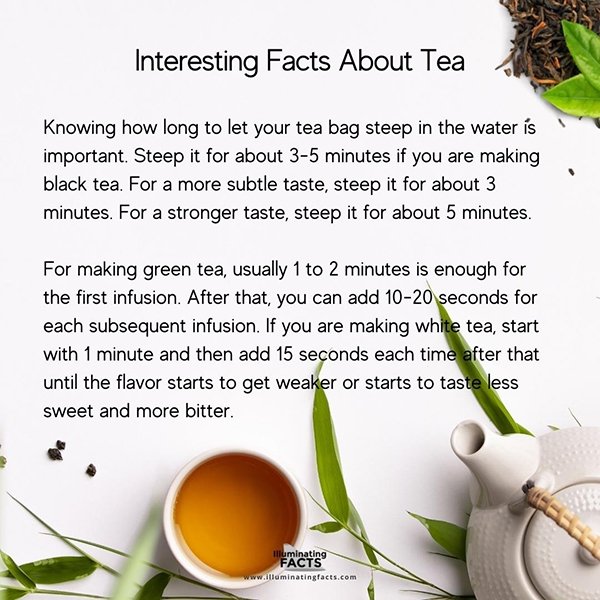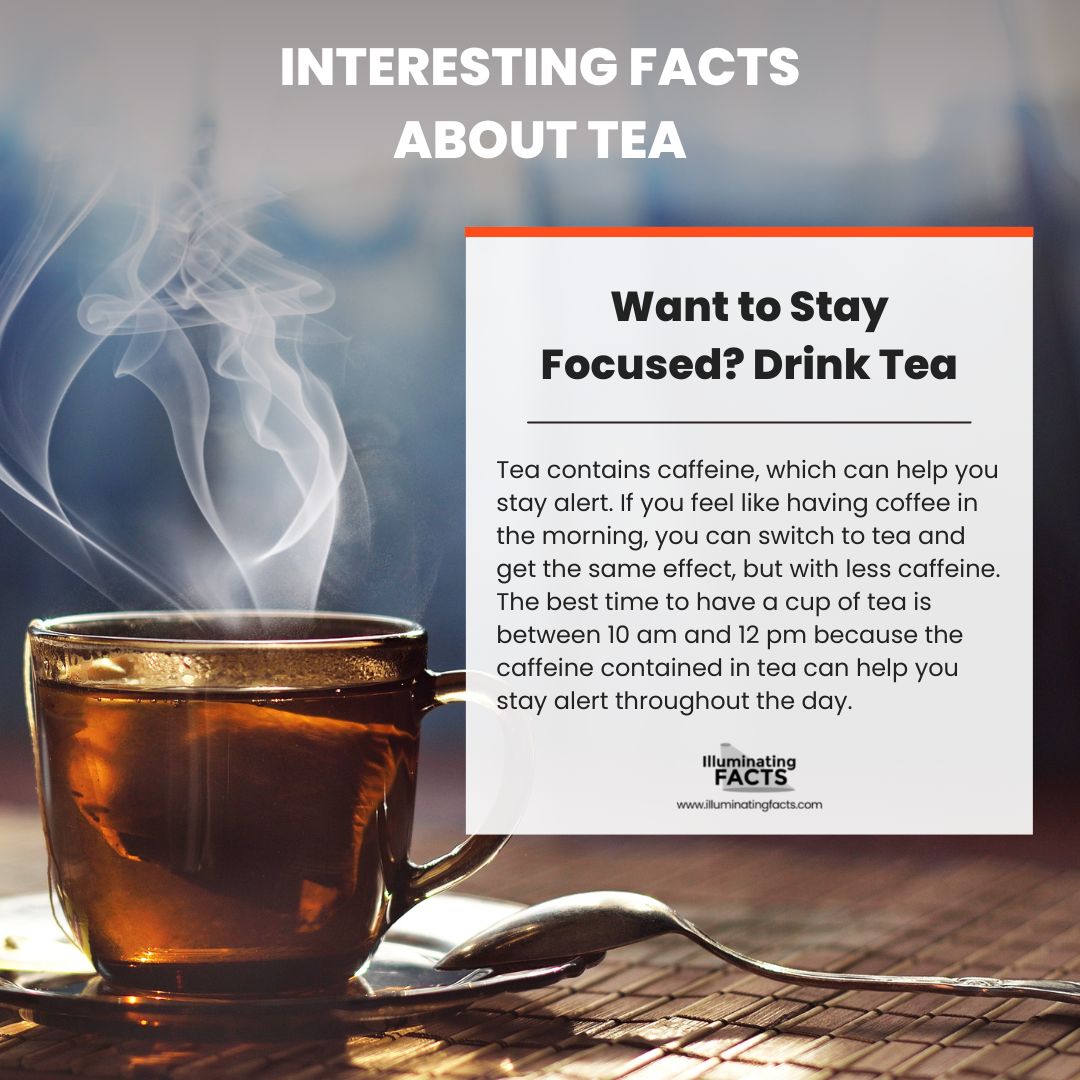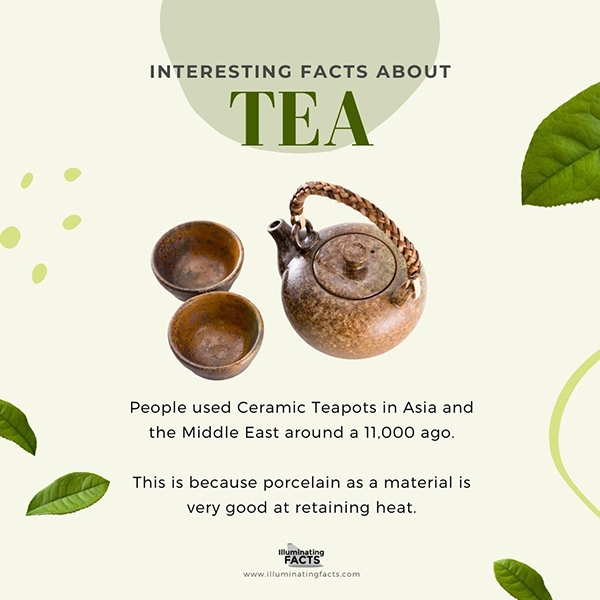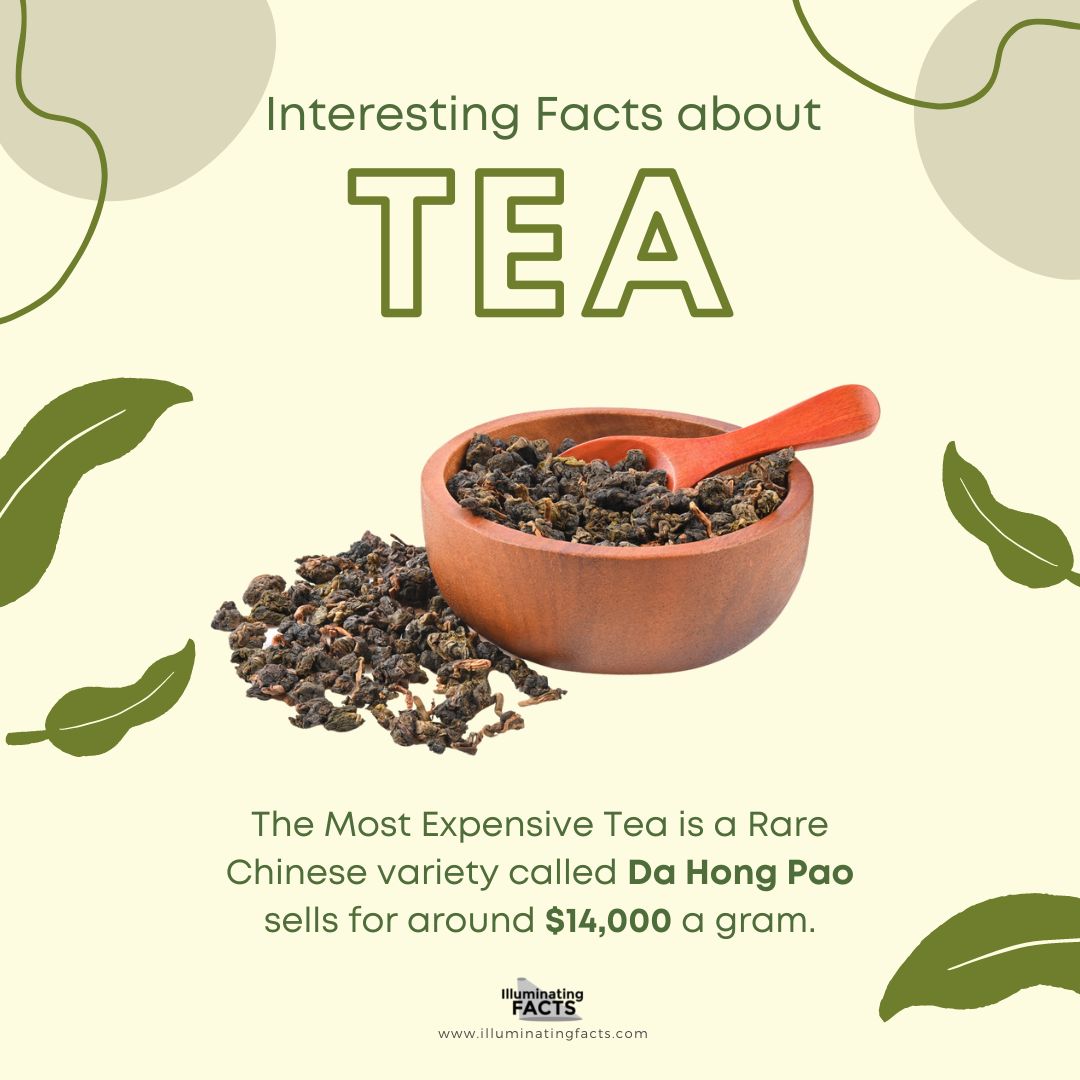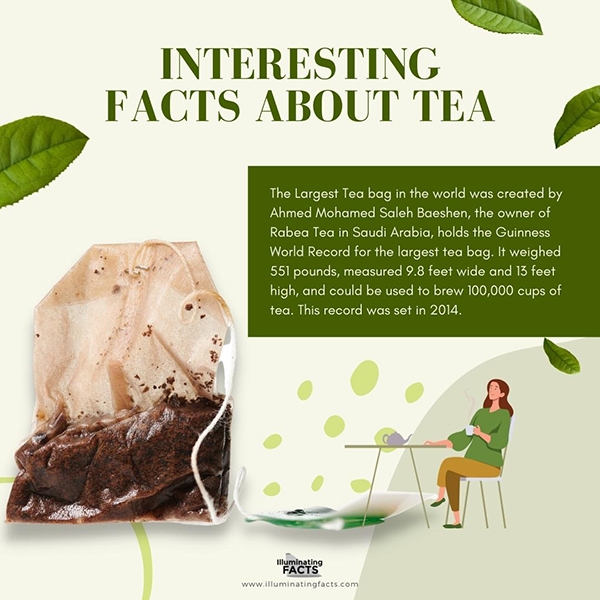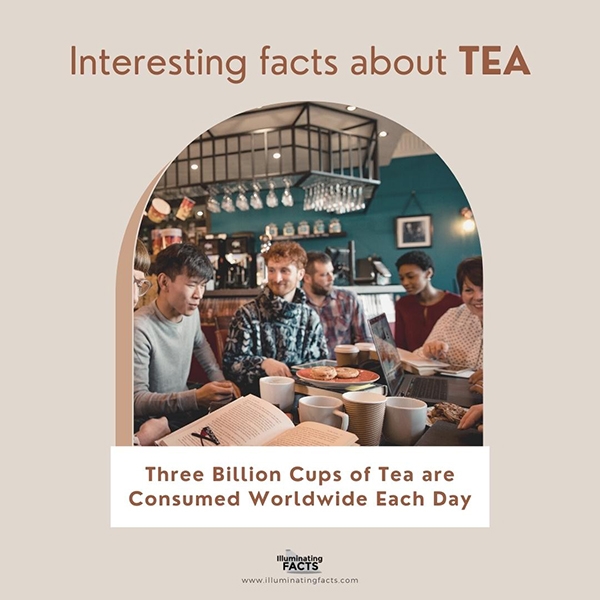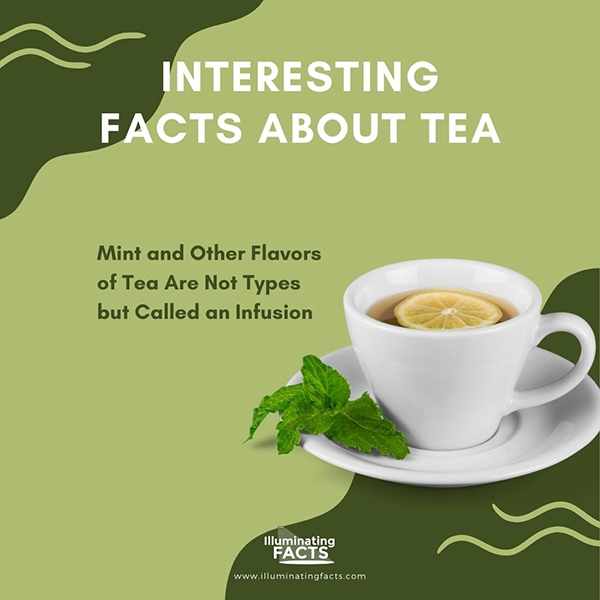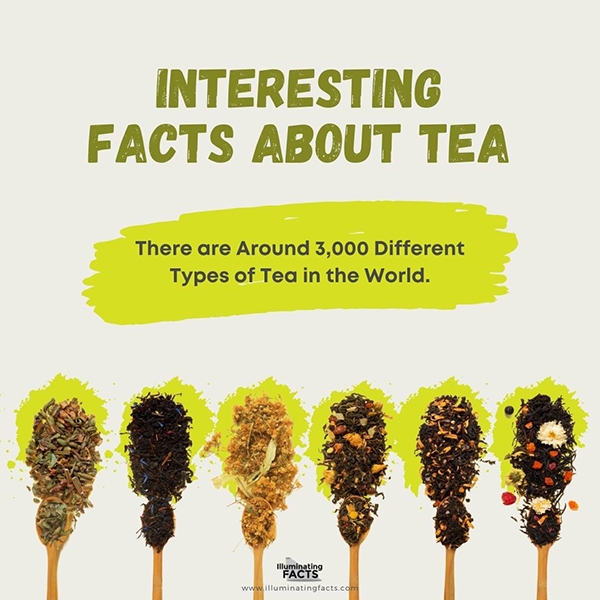Did you know that tea is the most popular drink in the world? It is served in nearly every country and has been a valuable trade commodity for hundreds of years. India, China, and Japan still grow and consume the most tea, but teas from Indonesia, Sri Lanka, and Kenya are now among the most popular in European countries. The history of tea is fascinating, and there are many interesting facts about tea that you may not know about!
1. Tea was Originally Used for Medicinal Purposes like Detoxification
Tea was originally used for medicinal purposes like detoxification rather than for pleasure. The ancient Chinese also used it for religious ceremonies and as a way of showing respect.
The earliest use of tea as a stimulant was by Buddhist monks who would chew on leaves from the Camellia sinensis plant to stay awake during meditations. The ancient Chinese also chewed on tea leaves as a substitute for tobacco during times when smoking was prohibited. [1]
2. Several Types of Tea Come From the Same Plant
Different types of tea come from the same plant. For example, black and green teas come from the Camellia sinensis plant, while chamomile tea comes from a completely different plant called Matricaria chamomilla. [2]
3. Tea was kept in a Locked Chest in the 18th Century
Tea was a valuable commodity in England during the 18th century. Those who could afford it stored it in locked cabinets, and only the master of the house held the key. The servant would ask for the key to prepare tea for the family. Usually, it would be just once a day. This was to ensure that the tea wasn’t wasted. Tea was expensive in those days. [3]
4. Tea Contains Polyphenols
Tea contains polyphenols, which are antioxidants that may help reduce the risk of heart disease, stroke, and some cancers. Green and black teas are the best sources of polyphenols and offer the most health benefits. [13]
5. Competing Aromas May Affect the Delicate Flavors of Tea
Most people are familiar with the idea that some teas, like white and green teas, should be served in a clean environment without competing aromas. This is because their subtle flavors can be easily overwhelmed by stronger scents. But did you know that it isn’t only other fragrances that can affect the taste of your tea? [14]
The human body also produces odors that can throw off the taste of your brew. The most obvious example is what happens when you drink tea after brushing your teeth — the strong peppermint flavor in toothpaste will overpower even a strong black tea. However, it’s not just strong mint scents that can affect flavor; fragrances from food, perfume, or tobacco smoke can also change your perception of taste.
6. The World’s First Iced Tea
Richard Blechynden, the tea commissioner to the 1904 World’s Fair in St. Louis, was credited with the first iced tea recipe. [4]
Blechynden had set up a booth to promote British tea at the 1904 World’s Fair and was having trouble selling hot tea in the sweltering heat. To cool the product down, he poured hot tea over ice cubes in glasses, which eventually led to the invention of what we now know as iced tea.
7. Timing Plays an Important Role in Perfect Tea
Knowing how long you should let your tea bag steep in the water is important. Steep it for about 3-5 minutes if you are making black tea. If you want a more subtle taste, steep it for about 3 minutes. If you want a stronger taste, steep it for about 5 minutes. [15]
If you are making green tea, usually 1 to 2 minutes is good enough for the first infusion. After that, you can add 10-20 seconds for each subsequent infusion. Moreover, if you are making white tea, start with 1 minute and then add 15 seconds each time after that until the flavor starts to get weaker or starts to taste less sweet and more bitter.
8. Want to Stay Focused? Drink Tea
Tea contains caffeine, which can help you stay alert. If you feel like having coffee in the morning, you can switch to tea and get the same effect, but with less caffeine. The best time to have a cup of tea is between 10 am and 12 pm because the caffeine contained in tea can help you stay alert throughout the day. [5]
9. People used Ceramic Teapots in Asia and the Middle East around a Decamillennium ago
Ceramic teapots were first used in Asia and the Middle East around 11,000 years ago, and they are still an important part of tea culture. This is because porcelain as a material is very good at retaining heat. This means that a pot of tea can be kept hotter and longer. It also means that it takes more time to warm up the teapot, to begin with, but once it’s hot, it stays that way for quite some time. [16]
10. The Most Expensive Tea is a Rare Chinese variety called Da Hong Pao
Da Hong Pao sells for around $14,000 a gram — more than 30 times the price of its weight in gold. Da Hong Pao means ‘big red dress’. It is grown in the Wuyi Mountains in the Fujian province of China. There are only six plants left in the world. [6]
11. Green Tea is known as a Superfood
Green tea is a superfood that can be enjoyed both hot and cold. It is loaded with powerful antioxidants, which can help prevent cell damage. Green tea has been shown to help lower the risk of heart disease, as well as type 2 diabetes and cancer. The great thing about green tea is that it’s versatile and can be prepared in numerous ways.
12. The Invention of the Tea Bag
The tea bag revolutionized the tea industry. The idea of the tea bag was first introduced in America. In 1908, Thomas Sullivan, a New York tea merchant, sent out samples of his tea in small silk bags. His customers who received the samples thought that these silk bags were meant to be used as infusers and put them directly into hot water. Thomas Sullivan noticed that this was actually quite convenient, and he began to market his product this way. This is how the tea bag was invented. [7]
13. Tea can be used as a Pain Reliever
You can use tea to relieve pain caused by toothaches or earaches. You have to soak a cotton ball in a cup of warm black or green tea and place the cotton ball over the affected area for several minutes. The antioxidants in tea will help reduce pain and inflammation. [8]
14. The Largest Tea Bag in the World
Ahmed Mohamed Saleh Baeshen, the owner of Rabea Tea in Saudi Arabia, holds the Guinness World Record for the largest tea bag. It weighed 551 pounds, measured 9.8 feet wide and 13 feet high, and could be used to brew 100,000 cups of tea. This record was set in 2014. [9]
15. Three Billion Cups of Tea are Consumed Worldwide Each Day
More than 3 billion cups of tea are consumed by people around the world each day. Whether it’s an English breakfast tea, herbal tea, or some other variety, tea is the favorite drink of many people around the globe. In fact, the only thing more commonly drank than tea is water. [10]
16. Mint and Other Flavors of Tea Are Not Types but Called an Infusion
In fact, these teas are not considered to be types of tea at all. Instead, they are called infusions. It is called an infusion when you infuse any type of tea with another type of flavor. This can refer to a number of different ingredients and spices, including vanilla, lavender, lemongrass, mint, or even cloves.
Even though these teas are not actually types of teas in the true sense of the word, you will still find them classified as such because most people do not know what an infusion is.
17. There are Around 3,000 Different Types of Tea in the World
There are around 3,000 different types of tea in the world, but only six main types: black, green, white, oolong, yellow and dark. All teas come from the same plant: Camellia sinensis. The difference between them is in their processing methods. [11]
18. Tea Keeps Your Bones Healthy
The fluoride in the tea helps your bones stay healthy, and it can even prevent osteoporosis. This is one of the most interesting benefits of drinking tea, especially for women who are more likely to develop osteoporosis as they age. [12]
19. A Red Tea Set
The color red was historically associated with good luck in China, and a red tea set would be given as a gift at weddings and other special occasions.
20. Used Tea Leaves are Valued in Japan
In Japan, used tea leaves are spread on the floor at home to keep it clean and fresh-smelling because they contain substances that kill bacteria, fungus, and insects such as cockroaches.
Conclusion
Tea is one of the oldest non-alcoholic beverages in the world. It has been drunk for more than 5000 years, and there are over a thousand types of tea. Equally important, tea ranks first as China’s most popular beverage and is second only to water as the most popular beverage in Great Britain, the United States, and other countries.
References
- Just your cup of tea: The history (and health claims) of the nation’s favourite brew. (2016, June 9). University of Cambridge. https://www.cam.ac.uk/research/discussion/just-your-cup-of-tea-the-history-and-health-claims-of-the-nations-favourite-brew
- Black tea vs green tea : The difference is more than just colour. (2022, June 10). VAHDAM® USA. https://www.vahdam.com/blogs/tea-us/black-tea-vs-green-tea-the-difference-is-more-than-just-colour
- Tea chests : Grey’s teas. (2021, October 1). Grey’s Teas. https://greysteas.co.uk/tea-chests
- The sweet history of iced tea. (2019, August 7). Revolution Tea. https://www.revolutiontea.com/blogs/news/the-sweet-history-of-iced-tea
- Murarka, H. (2019, March 1). Working on a deadline? These five beverages work as well as coffee. TheQuint. https://www.thequint.com/fit/beverages-other-than-coffee-to-stay-awake-at-night
- The most expensive teas in the world. (2019, March 19). Laboratorio dell’espresso. https://laboratorioespresso.it/en/the-most-expensive-teas/
- The humble tea bag. (n.d.). UK Tea & Infusions Association. https://www.tea.co.uk/the-history-of-the-tea-bag
- DanahyN, A. (n.d.). 6 delicious anti-inflammatory teas. Healthline. https://www.healthline.com/nutrition/anti-inflammatory-tea
- Largest tea bag. (n.d.). Guinness World Records. https://www.guinnessworldrecords.com/world-records/largest-tea-bag
- You’re stuck at home, drinking a ton of tea—and prices are rising. (2020, September 24). mint. https://www.livemint.com/news/world/you-re-stuck-at-home-drinking-a-ton-of-tea-and-prices-are-rising-11600924691692.html
- Types of tea. (n.d.). Stash Tea. https://www.stashtea.com/blogs/education/tea-types
- Green tea and bone health: Evidence from laboratory studies. (n.d.). PubMed Central (PMC). https://www.ncbi.nlm.nih.gov/pmc/articles/PMC3123403/
- Tea. (2022, January 27). The Nutrition Source. https://www.hsph.harvard.edu/nutritionsource/food-features/tea
- Effects of different tea tree varieties on the color, aroma, and taste of Chinese Enshi green tea. (n.d.). Science Direct. https://www.sciencedirect.com/science/article/pii/S2590157522000876
- How long to steep tea: A complete guide. (2021, September 5). ArtfulTea. https://www.artfultea.com/tea-wisdom-1/loose-leaf-tea-steep-time
- Interesting facts about tea. (n.d.). Royal Museums Greenwich. https://www.rmg.co.uk/stories/topics/interesting-facts-about-tea



